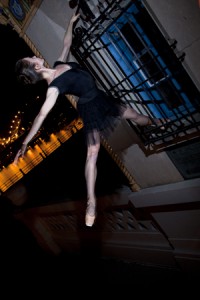by Emily Kate Long

Lately I’ve become increasingly aware of—and increasingly excited by—how much hard science goes into this esoteric and ephemeral art form. The study of technique is, at its roots, a study of kinesiology: physics applied to the human body. Broadening the scientific scope a bit, the emotional, intellectual, and sensory exchanges that happen in the studio and onstage are roughly analogous to biological mutualism. This installment of “Finding Balance” is a look at the fine balance between needs and gifts of the participants in artistic exchange and the trust that’s required to achieve equilibrium—the balance of science with something greater and less measurable.
In biology, mutualistic relationships are categorized as obligative (the relationship is necessary for the survival of one or both participants) or facultative (useful but nonessential for one or both participants). Additionally, the interaction can be described in terms of what is being exchanged between parties: services, resources, or both.
Often the focus is on the relationship between performers and audience, but there are a lot of other players here. Teachers, directors, choreographers, musicians, production staff, and stage crew all make necessary contributions to the presentation of the artistic product, and each derives benefit from the process and the product. The right balance of mutualistic relationships in nature encourages the success of ecosystems. The right balance in professional dance is necessary for the survival and advancement of our art form.
Dancers require opportunities to hone our craft, opportunities to share our art, and individuals or ideas from which to draw inspiration. Classes and rehearsals offer opportunities to perfect movements, and for those things, dancers need a facilitator—a teacher, director, choreographer, or stager. Sharing our art can’t happen without another party present; that’s where the audience comes in. Dancers draw inspiration from a multitude of sources: the audience, the facilitator, the dance itself, the music, fellow dancers, emotions, and past life experiences. Our relationship to all of these things is largely obligative—we cannot intuit technique or dance exclusively by instinct. We cannot be our sole source of motivation and we definitely can’t watch ourselves from across the footlights.
The primary need (arguably, the exclusive need) of the audience is an exceptional sensory and emotional experience, which is delivered directly by the performers, choreographer, musicians, and designers. Of course, this delivery would be impossible without the work of directors, coaches, and crew as well. The audience’s relationship to the performers and facilitators is ambiguous in terms of being essential or simply beneficial—certainly, society at large benefits from art, but only individual audience members (and sometimes not even they) know whether they need to engage in a relationship with dance. [Read more…]




